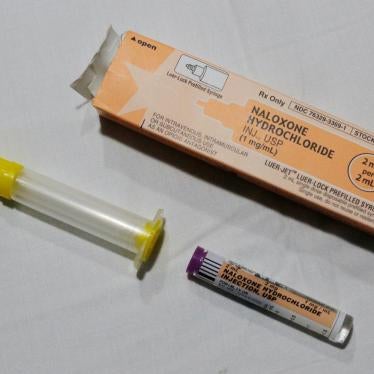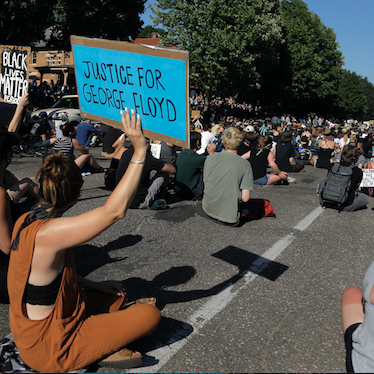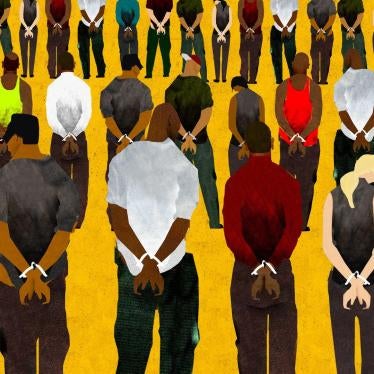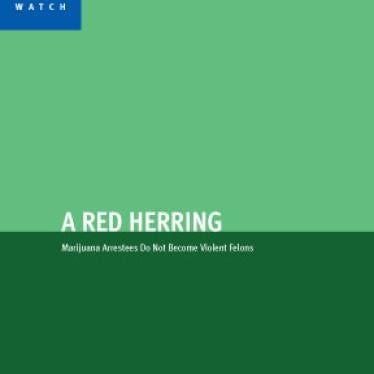On behalf of Human Rights Watch, I wish to thank Chairman Nadler, Subcommittee Chair, Sheila Jackson Lee, Ranking Chair, Andy Biggs, Subcommittee Vice-Chair, Cori Bush and all members of the US House Committee on the Judiciary’s Subcommittee on Crime, Terrorism and Homeland Security, for the opportunity and privilege to submit this statement for its hearing to address Controlled Substances: Federal Policies and Enforcement. My name is Nicole Austin- Hillery and I am the Executive Director of the US Program at Human Rights Watch. Human Rights Watch is an international organization with staff in more than 40 countries which works to defend the rights of people worldwide. We investigate abuses, expose the facts related to those abuses and pressure those with power to respect rights and secure justice.
I have worked as both a civil and human rights attorney and advocate on criminal justice issues for over a decade, including the interconnected issues of reform, drug policy and racial justice as they relate to the criminal justice system. I have served in leadership roles in national organizations where I oversaw work focused on how to improve our justice system to provide fair and racially equitable policies regarding drug enforcement and treatment. I am honored to have this opportunity to address the committee regarding ways to effectively, and fairly, approach drug policy in the United States.
Reforming and Creating Sensible Drug Policy
In 2016, Human Rights Watch and the American Civil Liberties Union (ACLU) issued a joint report entitled “Every 25 Seconds: The Human Toll of Criminalizing Drug Use in the United States.” Our research found that, at the time, every 25 seconds in the United States, someone is arrested for the simple act of possessing drugs for their personal use.[1] The numbers have only worsened in recent years.[2] Then and now, police in the United States make far more arrests for simple drug possession than for any other crime.[3] More than one of every seven arrests by state law enforcement is for simple drug possession.[4], [5] Each day, tens of thousands more are convicted for that possession, cycle through jails and prisons, and spend extended periods on probation and parole, often burdened with crippling debt from court-imposed fees and fines.[6] Drug possession arrests remain significant contributors to mass incarceration in the United States.
The cost of these arrests and incarcerations, however, extend far beyond individual experiences in the formal criminal justice system. The cost to the incarcerated individuals, their families, and communities, is devastating.[7] A criminal record locks these individuals out of jobs, housing, education, welfare assistance, voting and much more. It also subjects them to discrimination and stigma.[8] What these numbers tell us is that there is a human cost to criminalizing personal drug use and possession in the United States.[9] Criminalizing simple drug possession has caused dramatic and unnecessary harms around the country, both for individuals and for communities that are subject to discriminatory enforcement.[10] There are injustices and corresponding harms at every stage of the criminal process, harms that are all the more apparent when, as often happens, police, prosecutors, or judges respond to drug use as aggressively as the law allows.[11]
Families, friends, and neighbors understandably want government to take actions to prevent the potential harms of substance use disorder.[12] Yet, the model that has been used for far too long in the US does little to help people whose drug use has become problematic.[13] Voluntary treatment for those who need and want it is often unavailable, and criminalization tends to drive people who use drugs underground, making it less likely they will access care and more likely they will engage in unsafe practices that make them vulnerable to disease and overdose.[14] Indeed, the last decade has seen a dramatic rise in overdose deaths, hitting over 81,000—the highest number ever recorded by the Centers for Disease Control and Prevention— in the year that ended in 2020, despite widespread criminalization of simple drug possession.[15]
Governments and communities have a legitimate interest in preventing problematic substance use.[16] But, the criminal legal system is not the solution to this problem and has led to dramatically harmful consequences. The criminalization of drug possession for personal use is also inherently problematic because it represents a restriction on individual rights that is neither necessary nor proportionate to the goals it seeks to accomplish.[17] It punishes an activity that does not directly harm others.[18]
More broadly, the “war on drugs” has contributed significantly to the problem of mass incarceration in the United States. In addition to the vast numbers of people arrested for simple drug possession, many other people end up behind bars and serving extremely harsh sentences, often for low-level drug sales, crimes generally committed to support drug use or to alleviate poverty. Nearly one in five people in state prisons and jails are there for drug offenses.[19]
After decades of “tough on crime” policies, there is growing recognition in the US that governments need to undertake meaningful criminal justice reform and that the “war on drugs” has failed.[20] There has been a national effort to take on parts of the problem—addressing police abuse, long sentences, and reclassification of certain drugs.[21] Each of these steps is critical and I will address some of them further herein. However, these steps are simply not enough—it is time to have a real, honest and critical discussion about the criminalization of drug use and what steps must be taken to rethink reform.[22] What is needed, particularly in this historic moment where we have come face to face with issues of racial and economic disparities, is a comprehensive approach to ending the failed policies of the war on drugs and addressing the economic, social, and health needs of communities, disproportionately impacted by them, largely Black and brown.
Racial Disparities in Drug Arrests and Sentencing
Communities of color and low-income people are disproportionately impacted by drug arrests and the unintended consequences of those arrests.[23] The criminalization of drug possession has served as an excuse over the last several decades for authorities to significantly increase the presence of police in these communities and enforce laws on simple drug possession in racially discriminatory ways.[24]
Data analyzed by Human Rights Watch shows that, over the course of their lives, white people are more likely than Black people to use illicit drugs in general, as well as marijuana, cocaine, heroin, methamphetamines, and prescription drugs (for non-medical purposes) specifically.[25] Data has consistently shown that Black and white adults use illicit drugs and marijuana at similar rates.[26] Yet, in the US, Black adults are three times as likely as white adults to be arrested for simple drug possession.[27] Human Rights Watch also found stark racial disparities in arrest rates for drug possession even in the same state or city.[28] In Manhattan, for example, we found that Black people were eleven times as likely as white people to be arrested for simple drug possession.[29] The sheer magnitude of drug possession arrests means that they are a defining feature of the way certain communities experience and interact with police in the United States.[30]
More broadly, because Black communities have been the principal targets in the “war on drugs,” the burden of drug arrests and incarceration falls disproportionately on Black people, their families, and neighborhoods.[31] It is actually more than just the burden of drug arrests. It is the burden of increased police presence and surveillance which equals not just more drug arrests but more arrests in total, in addition to the other non-quantifiable damage that comes from living under police scrutiny.
Racial disparities in drug arrests reflect a history of complex political, criminal justice, and socio-economic dynamics, each individually and cumulatively affected by racial concerns and tensions.[32] A fresh and evidence-based rethinking of the drug war paradigm that includes moving away from criminalization of simple drug possession is needed.[33] Any solutions should also include a focus on communities and the needs identified by community members themselves and not simply those identified by politicians and outside stakeholders.
The Collateral Consequences of Drug Convictions
The impact of a drug conviction can, and often does, impact multiple facets of an individual’s life beyond the experience of incarceration. In addition to excessive sentences, including lengthy probation terms, frequently with onerous conditions,[34] there is massive criminal justice debt and restrictions that impact one’s ability to function within their families and communities. The costs of these arrests and incarcerations extend far beyond individual experiences in the formal criminal justice system. The cost to those incarcerated, their families and communities, is devastating.[35] Criminalizing simple drug possession has caused dramatic and unnecessary harms around the country, both for individuals and for communities that are subject to discriminatory enforcement.[36]
A drug conviction also keeps many people from getting a job, renting a home, and accessing benefits and other programs they may need to support themselves and their families. Federal law allows states to lock people out of welfare assistance and public housing for years and sometimes even for life based on a drug conviction.[37] People convicted of simple drug possession may no longer qualify for educational loans; they may be forced to rely on public transport because their driver’s license is automatically suspended; they may be banned from juries and they may face deportation if they are not US citizens, no matter how long they have lived in the US or how many family members live in the country.[38] In addition, they bear the stigma associated with the labels of “drug” offender” the state has stamped on them, subjecting them to private discrimination in their daily interactions with landlords, employers, and peers.[39]
In 2021, the nation experienced a national election with record-breaking numbers of voters engaged in the electoral process, yet “5.2 million Americans were forbidden to vote because of felony disenfranchisement, or laws restricting voting rights for those convicted of felony-level crimes.”[40] Many of these individuals have a drug conviction that prevents them from enjoying full civic participation. These limitations amount to individuals taking on the moniker of “second class citizens.”
Decriminalization as a Policy Solution
Laws criminalizing the possession of drugs for personal use are inconsistent with respect for human autonomy, which is at the heart of the right to privacy, and contravene the human rights principle of proportionality in punishment.[41] In practice, criminalizing drug use also violates the right to health of those who use drugs.[42] The harms experienced by people who use drugs, and their families and broader communities, as a result of the enforcement of these laws, may constitute additional, separate human rights violations.[43]
At the time of the Human Rights Watch/ACLU report in 2016, all US states and the federal government criminalized possession of certain categories of drugs for personal use.[44] Last year, Oregon took an important step, with a majority of voters approving a ballot initiative that shifts the state away from criminalization and toward a health-centered approach to drug use, investing in voluntary treatment, services, and support for people who are struggling with problematic drug use. Nonetheless, other states across the country criminalize drug possession and enforce those laws with high numbers of arrests—as of 2019, more than 86 percent of drug arrests were for simple possession.[45]
Criminalization has yielded few, if any, benefits.[46] Criminalizing drugs is not an effective public safety policy. Human Rights Watch is not aware of any empirical evidence that low-level drug possession defendants would otherwise go on to commit violent crimes.[47]
Criminalization is also a counterproductive public health strategy.[48] Rates of drug use across drug types in the US have not decreased over the past decades, despite widespread criminalization.[49] For people who struggle with substance use disorder, criminalization often means cycling in and out of jail or prison, with little to no access to voluntary treatment.[50] Criminalization undermines the right to health, as fear of law enforcement can drive people who use drugs underground, deterring them from accessing health services and emergency medicine and leading to illness and sometimes fatal overdose.[51]
It is time to rethink the criminalization paradigm. Although the amount cannot be quantified, the enormous resources spent to identify, arrest, prosecute, sentence, incarcerate, and supervise people whose only offense has been possession of drugs is hardly money well spent, and it has caused far more harm than good.[52] Fortunately, there are alternatives to criminalization.[53] Other countries—and now some states in the US (in particular, Oregon) are experimenting with models of decriminalization that the US can examine to help chart a path forward.[54], [55]
Ending the criminalization of simple drug possession does not mean turning a blind eye to the misery that substance use disorder can cause in the lives of those who struggle with it and their families.[56] On the contrary, it requires a more direct focus on effective measures to reduce the harms associated with problematic drug use, and providing voluntary access to treatment and support for those who struggle with it.[57] Ultimately, the criminal law does not achieve these important ends, and causes additional harm and loss instead.[58]
Ending Excessive Sentences
Almost 30 years of harsh sentencing laws have left the US with over 2.2 million people behind bars.[59] In the 1980s state and federal legislators began to adopt “tough on crime” laws in response to rising crime rates, racial tensions, the emergence of crack cocaine, supposed threats to “traditional values” from counterculture movements, and fears of perceived increases in the numbers of immigrant and youth offenders.[60] These attitudes were a follow-up to the Nixon Administration’s push to wage a war against Black people–a plan that was well-known and documented.[61] Specifically, for most of the past century,[62] Congress and state legislatures simultaneously adopted harsher sentencing laws, including mandatory minimums and habitual offender statutes.[63]
The plan was flawed. The nation should not have experienced a “war on drugs” – drug use is a personal choice and the “war” was started as a political tool with racist intentions. It was an abject failure of a policy that violated human rights at its onset.
Specifically, at the federal level, the implementation of mandatory minimums, along with harsh sentencing guidelines, has severely lengthened federal prison sentences and contributed to an over 500 percent increase in the current prison population since 1980.[64] While the First Step Act, signed into law by the previous administration in 2018, took some steps to address the issue of over-incarceration, bolder and larger steps are needed.
Lawmakers should ensure that criminal laws permit judges to impose proportionate sentences, that consider individualized circumstances and allow appropriate leniency.[65] Reforming or eliminating mandatory minimum sentences is a recommendation that has been on the table and supported by criminal justice reform advocates for years, but we have yet to achieve this goal. These sentences are “criminal penalties that limit judicial discretion and require judges to impose a specified minimum term of imprisonment upon conviction.”[66] Nearly two-thirds of all federal drug sentences are subject to mandatory minimums.[67] The prospective sentencing reforms incorporated in the First Step Act, including reduced sentencing enhancements for prior drug offenses, clarification that the 25-year mandatory minimum for certain firearm offenses is reserved for true recidivists, and expanded safety valve relief for certain nonviolent drug offenses, will help to limit excessive sentences in the future.
Unfortunately, these changes are not retroactive, and it is estimated at least four thousand people in federal prison today serving sentences under now-reformed statutes will not benefit, including many people who will die in prison without retroactivity.[68]
Recommendations for Reform
Congress has an opportunity to make transformative changes to drug policies that finally provide an equitable, compassionate, and sound solution to addressing the numerous concerns laid out in this testimony. This is a moment to recognize and address the harms that harsh, disparate policies that have focused more on punishment than supporting healthy individuals, families and communities have had on the people, particularly those who are Black and low-income.
Congress should follow in Oregon’s footsteps by prioritizing an effort to end the criminalization of possession of drugs for personal use, and shift resources from the policing of drug use toward access to evidence-based treatment and other voluntary supports for people who struggle with substance use disorder.
Additional legislative proposals that can contribute to reducing the excessive punishment brought on by the “war on drugs,” which Congress should undertake and pass, include:
- The Justice Safety Valve Act of 2019 which would allow courts to impose a sentence below a mandatory minimum if the court finds that it is necessary to do so in order to impose a sentence that is not greater than necessary to comply with the statutory purpose of sentencing laid out in 18 U.S.C. 3553(a).[69]
- The Mandatory Minimum Reform Act of 2020 would eliminate mandatory minimum sentences for drug offenses.[70]
- Include in any sentencing reform legislation provisions that ensure the new law will be applied retroactively to individuals who have already been sentenced.[71]
- Avoid delay in passing legislation making the sentencing reforms enacted in the First Step Act of 2018 retroactive.[72]
- The Second Look Act would allow any individual who has served at least 10 years in federal prison to petition a court to take a “second look” at their sentence before a judge and determine whether they are eligible for a sentence reduction or release.[73]
- The MORE Act removes marijuana from the Controlled Substances Act and begins to repair the harm marijuana prohibition has caused to millions of people, particularly people of color, by establishing a fund for social equity programs to reinvest in affected communities. It also creates a process by which people with federal marijuana convictions can have their records for these convictions expunged, in some cases automatically, or can be resentenced.[74]
Thank you for the opportunity to submit this testimony.
[1] Human Rights Watch and the American Civil Liberties Union, Every 25 Seconds: The Human Toll of Criminalizing Drug Use in the United States (New York: Human Rights Watch, 2016), https://www.hrw.org/report/2016/10/12/every-25-seconds/human-toll-criminalizing-drug-use-united-states 2016, p. 2.
[2] In 2019, there were 1.35 million arrests for drug possession in the US, up from 1.25 million in 2015, the number upon which Human Rights Watch relied in its Every 25 Seconds report. See US Department of Justice, Criminal Justice Information Services Division, Federal Bureau of Investigation, 2019, Table 29 https://ucr.fbi.gov/crime-in- the-u.s/2019/crime-in-the-u.s.-2019/topic-pages/persons-arrested and “Persons Arrested” data showing that 86.7 percent of arrests for “drug abuse violations” in 2019 were for possession https://ucr.fbi.gov/crime-in-the- u.s/2019/crime-in-the-u.s.-2019/topic-pages/persons-arrested (accessed March 9, 2021); see also Human Rights Watch, Every 25 Seconds, p. 37.
[3] United States Department of Justice, Federal Bureau of Investigation, “Crime in the United States, 2019,” September 28, 2020, https://www.fbi.gov/news/pressrel/press-releases/fbi-releases-2019-crime-statistics (accessed March 8, 2021).
[4] United States Department of Justice, Federal Bureau of Investigation, “Crime in the United States, 2019,” September 28, 2020, https://www.fbi.gov/news/pressrel/press-releases/fbi-releases-2019-crime-statistics (accessed March 8, 2021).
[5] Human Rights Watch, Every 25 Seconds, p. 2.
[6] Human Rights Watch, Every 25 Seconds, p. 2.
[7] Ibid., p. 2.
[8] Ibid., p. 2.
[9] Ibid., p. 2.
[10] Ibid., p. 2.
[11] Ibid., p. 2.
[12] Ibid., p. 2.
[13] Ibid., p. 3.
[14] Ibid., p .3.
[15] United States Centers for Disease Control and Prevention, “Overdose Deaths Accelerating During COVID-19,”: Expanded Prevention Efforts Needed,” CDC press release, December 17, 2020, https://www.cdc.gov/media/releases/2020/p1218-overdose-deaths-covid-19.html (accessed March 9, 2021).
[16] Human Rights Watch, Every 25 Seconds, p. 3.
[17] Ibid., p. 3.
[18] Ibid., p. 3.
[19] The American criminal justice system holds almost 2.3 million people in 1,833 state prisons, 110 federal prisons, 1,772 juvenile correctional facilities, 3,134 local jails, 218 immigration detention facilities, and 80 Indian Country jails as well as in military prisons, civil commitment centers, state psychiatric hospitals, and prisons in U.S. territories.” Prison Policy Initiative, “Mass Incarceration: The Whole Pie 2020,” March 24, 2020, https://www.prisonpolicy.org/reports/pie2020.html (accessed March 9, 2021), p. 1.
[20] Human Rights Watch, Every 25 Seconds, p. 4.
[21] Ibid., p. 4.
[22] Ibid., p. 4.
[23] Human Rights Watch, Decades of Disparity: Drug Arrests and Race in the United States (New York: Human Rights Watch, 2009), https://www.hrw.org/report/2009/03/02/decades-disparity/drug-arrests-and-race-united-states, pp. 1-2.
[24] Human Rights Watch, Every 25 Seconds, p. 4.
[25] Ibid., p. 5.
[26] United States Centers for Disease Control and Prevention, National Center for Health Statistics, “Use of selected substances in the past month among persons aged 12 years and over, by age, sex, and race and Hispanic origin: United States, selected years 2002–2018,” https://www.cdc.gov/nchs/data/hus/2019/020-508.pdf (accessed March 8, 2021).
[27] Drug Policy Alliance, “2020 Annual Report,” February 17, 2021, https://drugpolicy.org/resource/drug-policy-alliance-annual-report (accessed March 9, 2021), p. 11.
[28] Human Rights Watch, Every 25 Seconds, p. 5.
[29] Ibid., p. 47.
[30] Ibid., p. 5.
[31] Human Rights Watch, Decades of Disparity, p. 1.
[32] Ibid., p. 1.
[33] Ibid., p. 1.
[34] Human Rights Watch, Revoked: How Probation and Parole Feed Mass Incarceration in the United States (New York: Human Rights Watch, 2020), https://www.hrw.org/report/2020/07/31/revoked/how-probation-and-parole- feed-mass-incarceration-united-states.
[35] Human Rights Watch, Every 25 Seconds, p. 2.
[36] Human Rights Watch, Every 25 Seconds, p. 2.
[37] Ibid., p. 11.
[38] Ibid., p. 11.
[39] Ibid., p. 11-12.
[40] The Sentencing Project, “Locked Out 2020: Estimates of People Denied Voting Rights Due to a Felony Conviction,” October 30, 2020, https://www.sentencingproject.org/publications/locked-out-2020-estimates-of-people-denied-voting-rights-due-to-a-felony-conviction/ (accessed March 9, 2021), p. 1.
[41] Human Rights Watch, Revoked, p. 12.
[42] Ibid., p. 12.
[43] Ibid., p. 12.
[44] Human Rights Watch, Every 25 Seconds, p. 4.
[45] Ibid., p. 12; Susan Stellin, “Is the ‘War on Drugs’ Over? Arrest Statistics Say No,” New York Times, November 5, 2019, https://www.nytimes.com/2019/11/05/upshot/is-the-war-on-drugs-over-arrest-statistics-say-no.html (accessed March 9, 2021).
[46] Human Rights Watch, Revoked, p. 12.
[47] Ibid., p. 12.
[48] Ibid., p. 12.
[49] Human Rights Watch, Every 25 Seconds, p. 3.
[50] Ibid., p. 12.
[51] Ibid., p. 12.
[52] Ibid., p. 12.
[53] Ibid., p. 13.
[54] Ibid., p. 13.
[55] Drug Policy Alliance, “2020 Annual Report,” February 17, 2021, https://drugpolicy.org/resource/drug-policy-alliance-annual-report (accessed March 9, 2021), pp. 10-13.
[56] Human Rights Watch, Every 25 Seconds, p. 13.
[57] Human Rights Watch, Every 25 Seconds, p. 13.
[58] Ibid., p. 13.
[59] Human Rights Watch, Nation Behind Bars: A Human Rights Solution (New York: Human Rights Watch, 2014), https://www.hrw.org/news/2014/05/06/us-nation-behind- bars#:~:text=The%2036%2Dpage%20report%2C%20%E2%80%9C,highest%20reported%20rate%20of%20incarcerat ion, p. 3.
[60] Ibid., p. 5.
[61] Tom LoBianco, “Report: Aide says Nixon’s war on drugs targeted blacks, hippies,” CNN, March 24, 2016, https://www.cnn.com/2016/03/23/politics/john-ehrlichman-richard-nixon-drug-war-blacks-hippie/index.html (accessed March 9, 2021).
[62] Drug Policy Alliance, “Dismantling the Federal Drug War: A Comprehensive Drug Decriminalization Framework,” July 29, 2020, https://drugpolicy.org/resource/dismantling-federal-drug-war-comprehensive-drug-decriminalization-framework-drug-policy (accessed March 9, 2021), p. 1.
[63] Human Rights Watch, Nation Behind Bars, p. 1.
[64] Human Rights Watch, Revoked, p. 132.
[65] Human Rights Watch, Nation Behind Bars, p. 8.
[66] The Justice Roundtable, “Transformative Justice: Recommendations for the New Administration and 117th Congress,” November 2020, https://justiceroundtable.org/wp-content/uploads/2020/11/Transformative- Justice.pdf (accessed March 9, 2021), p. 44.
[67] Ibid., p. 44.
[68] Ibid., p. 46.
[69] Ibid., p. 44.
[70] Ibid., p. 45.
[71] Ibid., p. 46.
[72] The Justice Roundtable, “Transformative Justice,” p. 45.
[73] Ibid., p. 45.
[74] “US: House Votes to End Marijuana Prohibition,” Human Rights Watch News release, December 4, 2020, https://www.hrw.org/news/2020/12/04/us-house-votes-end-marijuana-prohibition.








